Have you ever experienced the enchantment of a steaming bowl of Vietnamese Pho? If not, get ready to embark on a culinary adventure like no other. This traditional Vietnamese Pho recipe is not only easy to follow but also delivers a broth that is both light and bursting with flavor. Infused with aromatic spices such as cinnamon, star anise, and cardamom, every spoonful of this addictive soup will leave you craving more!
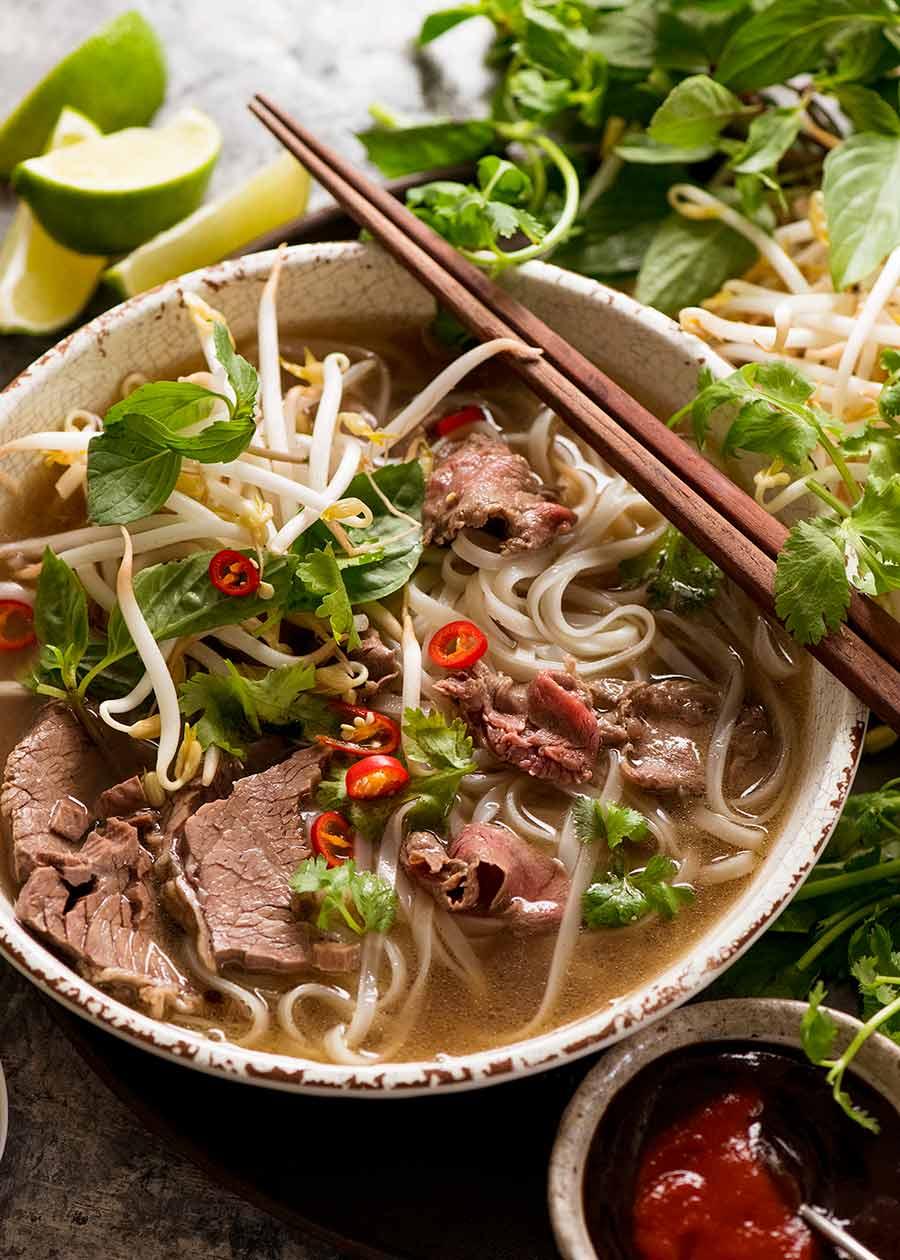
Embracing the Tradition of Pho
This Pho recipe has been meticulously crafted, refined, and perfected by various members of the RecipeTin family ever since their first trip to Vietnam. With extensive taste-testing and heated debates, they have created a recipe that lives up to the standards of the best Pho restaurants in Sydney and the vibrant street vendors of Vietnam.
Pho is a noodle soup that commands respect. Its signature broth, made from scratch, is not to be taken lightly.
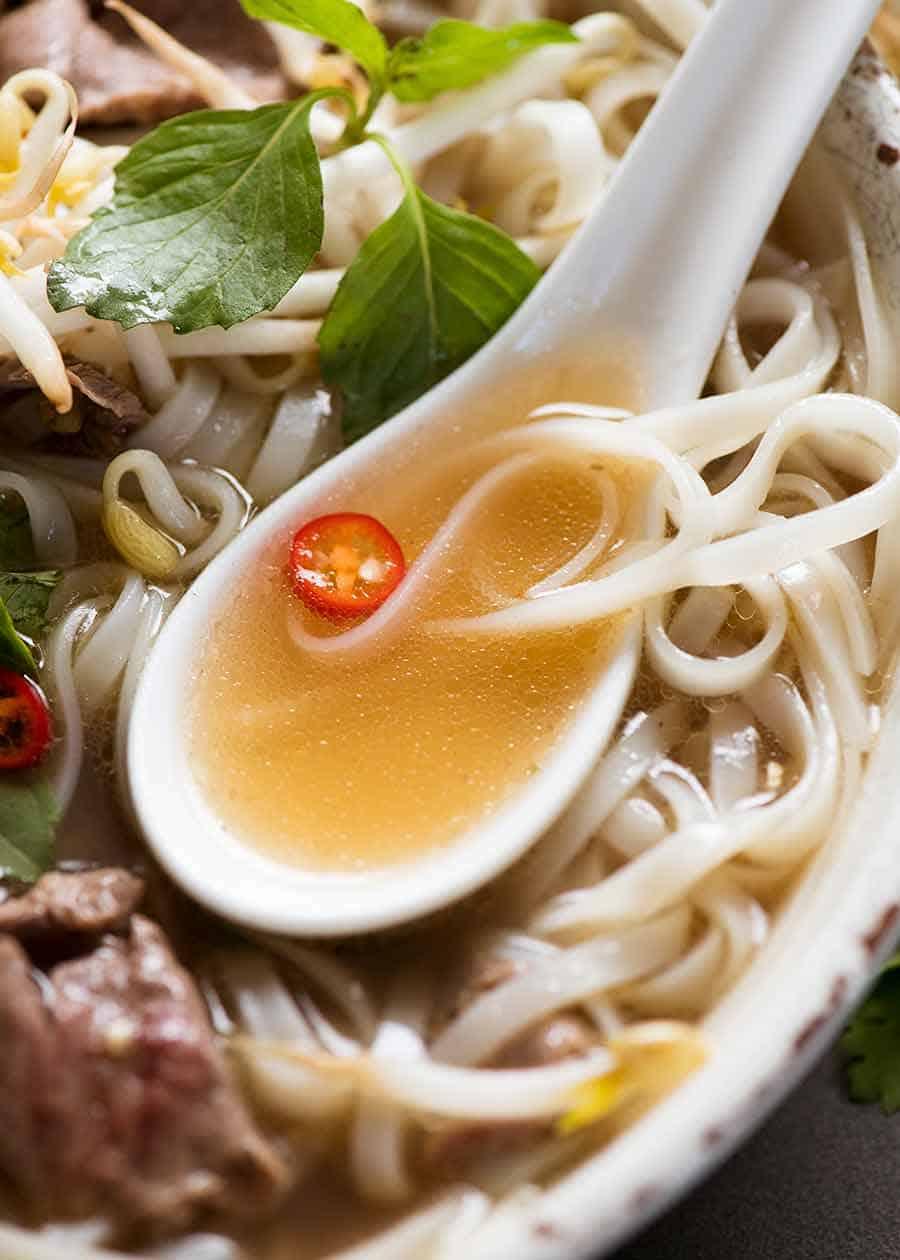
Unveiling the Essence of Pho
If you’re unfamiliar with Pho, you might be wondering what makes it so extraordinary. At first glance, it may appear like an ordinary bowl of beef noodle soup. However, one sip of the Pho broth will reveal its true magic.
The Pho broth is a delicate balance of lightness, richness, and umami flavor. It is an exquisite fusion of beefiness and a subtle hint of spices such as cinnamon, creating a complex and unforgettable taste. It comes as no surprise that Pho is hailed as one of the best soups in the world.
In Vietnam, locals know the best Pho can be found in bustling, crowded stalls rather than in tourist-filled establishments!
The Art of Crafting Homemade Pho
To truly appreciate Pho, it must be prepared from scratch, starting with a homemade beef broth. Simply adding spices to store-bought stock won’t do justice to this beloved soup. Trust us, we’ve tried!
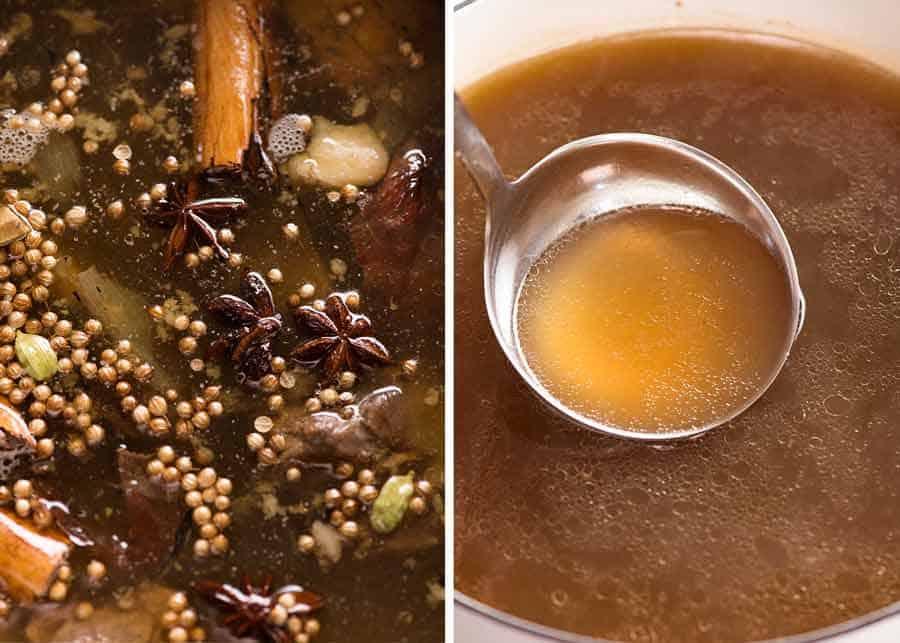
Unveiling the Secrets: How to Make Beef Pho
While the process of making Pho may seem daunting, it’s actually quite straightforward. The key is to handle a substantial amount of bones and beef and to have a large pot at your disposal. It’s more about time and patience than complex techniques!
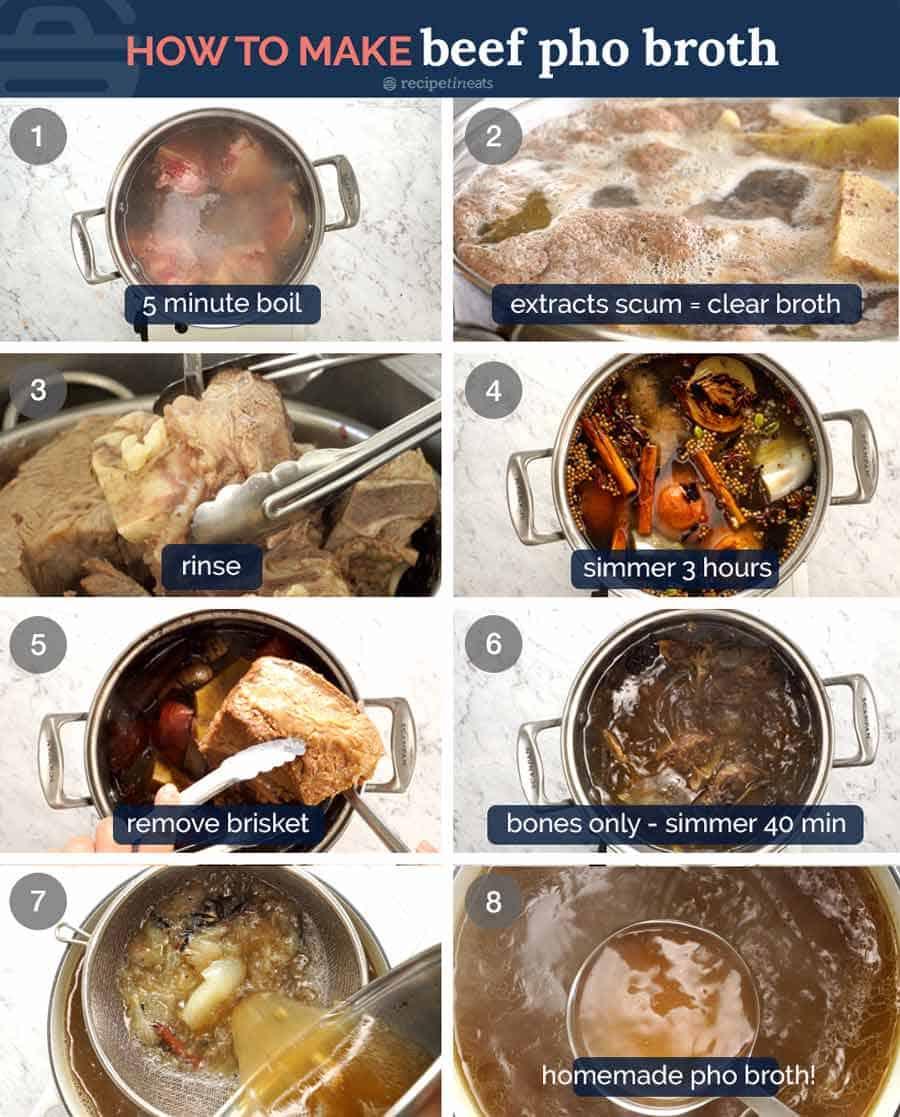

Here’s a step-by-step guide to crafting the perfect bowl of Beef Pho:
- Quick boil: Start by boiling the beef for about five minutes to remove any impurities and ensure a clear broth.
- Skim off the scum: As the beef cooks, skim off any foam or impurities that rise to the surface.
- Wash the bones: Rinse the bones thoroughly to remove any remaining scum.
- Simmer for three hours: In a large pot, combine the bones, beef, water, onion, ginger, and spices (cinnamon, cardamom, coriander, and star anise). Allow the broth to simmer for three hours, infusing it with all the wonderful flavors.
- Remove the brisket: Set aside a portion of the brisket for topping the Pho. The rest can be used in various delicious recipes.
- Simmer for an additional 40 minutes: Continue simmering the broth with just the bones for an additional 40 minutes.
- Strain and serve: Strain the broth to remove any solids, and ladle it into bowls over noodles. Don’t forget to pile on your favorite toppings!
The Perfect Combination of Meat and Bones
Creating an authentic Pho broth requires the right combination of beef meat and bones. Using bones alone won’t yield a flavorful enough broth. Trust us, we’ve tried countless recipes and found that the best results come from combining both meat and bones.
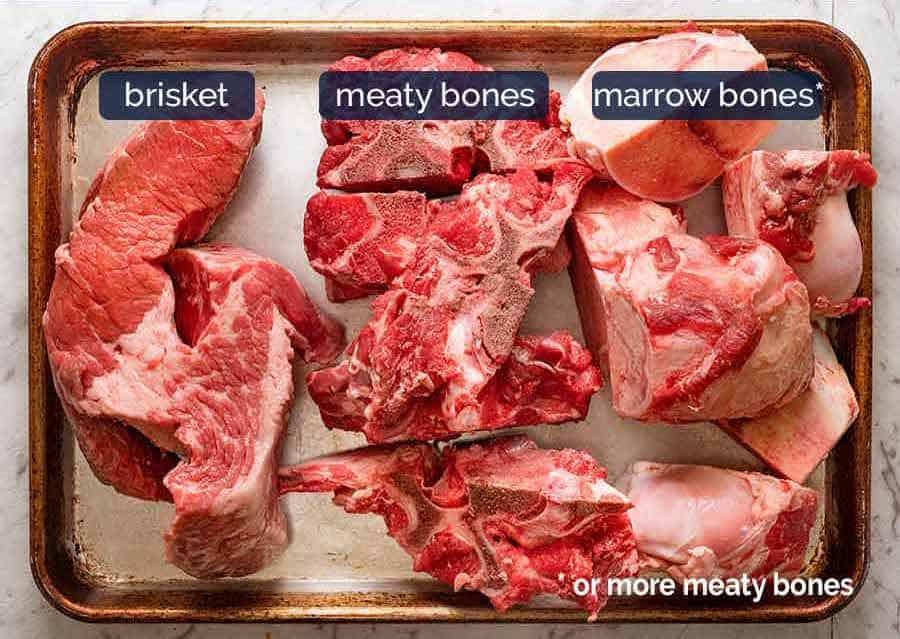
Here’s the combination we recommend for the best Pho soup flavor:
- 1.5kg / 3lb brisket: This cut of beef is favored by Pho vendors in Vietnam for its rich flavor and ability to withstand hours of simmering without falling apart. Other slow-cooking cuts like chuck and rib can be used as substitutes.
- 1kg / 2lb meaty bones: Opt for bones with a generous amount of meat on them to enhance the beefy flavor of the broth. Oxtail bones or additional brisket or chuck beef are excellent alternatives.
- 1kg / 2lb marrow bones: These bones, such as leg, shin, or knuckle, may have less meat but contribute essential richness to the Pho broth. If necessary, you can use more meaty bones as a substitute.
You can find these ingredients at your local butcher or Asian specialty stores. Don’t be afraid to venture out and explore!
Enhancing the Flavors with Spices and Ingredients
Apart from the beef, the remaining ingredients needed for the flavorful Pho broth are surprisingly simple.
The spices, including cinnamon and other aromatic additions, are toasted to bring out their full flavor before being added to the pot. Additionally, the ginger and onion are charred, imparting a subtle smoky taste that elevates the authenticity of the broth.
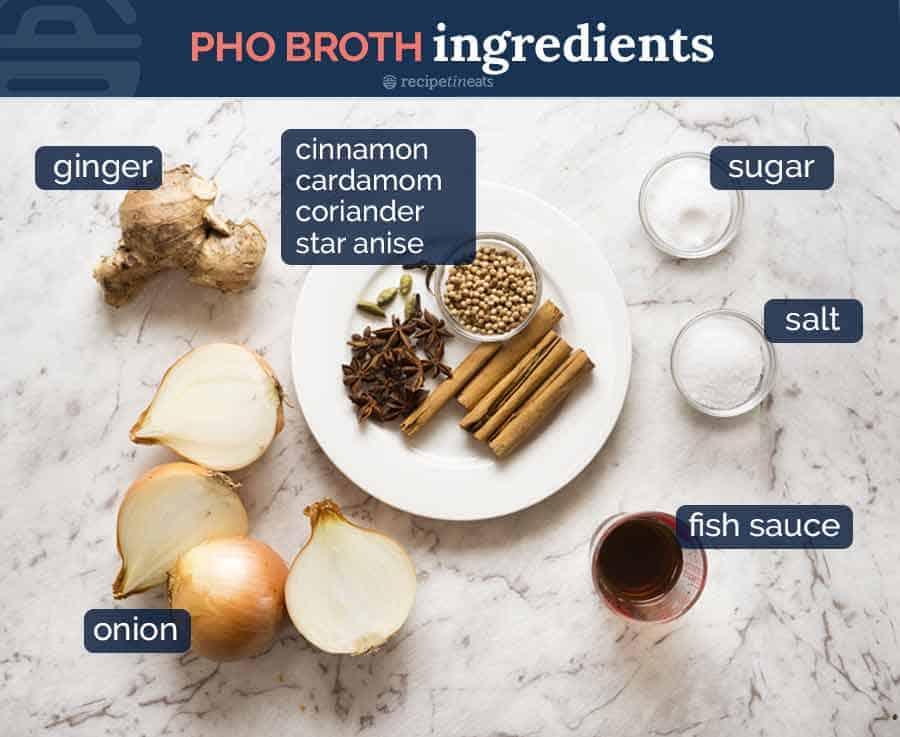

The Art of Serving Pho
To enjoy Pho in the classic Vietnamese style, follow these traditional serving suggestions:
- Rice noodles: Serve the Pho with either fresh or dried rice noodles.
- Thinly sliced raw beef: Place thin slices of raw beef in the bowl. When the hot broth is poured over them, they cook to a tender, medium-rare perfection. However, if you prefer your beef fully cooked, simply dunk the slices into the pot of hot broth for 10 seconds.
- Fresh herbs and bean sprouts: Offer generous piles of bean sprouts, Thai basil, and coriander/cilantro on the side, allowing each diner to customize their bowl.
- Lime wedges: Provide lime wedges to add a tangy citrus kick to the Pho.
- Sauces: Offer hoisin sauce and sriracha (or another chili sauce) as condiments for those who desire an extra flavor boost.
Typically, the bowls are presented with just noodles, beef slices, and broth, while the additional components are served on the side.
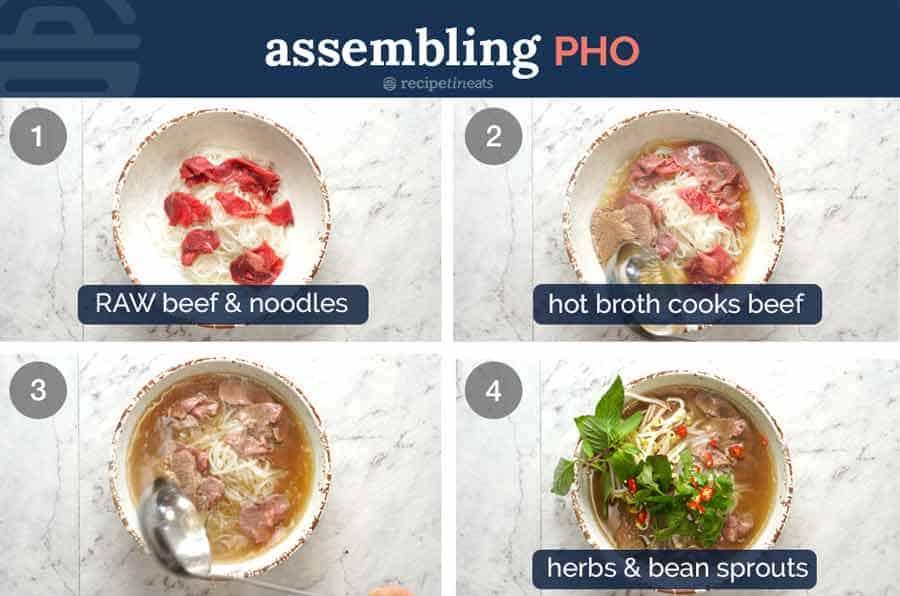
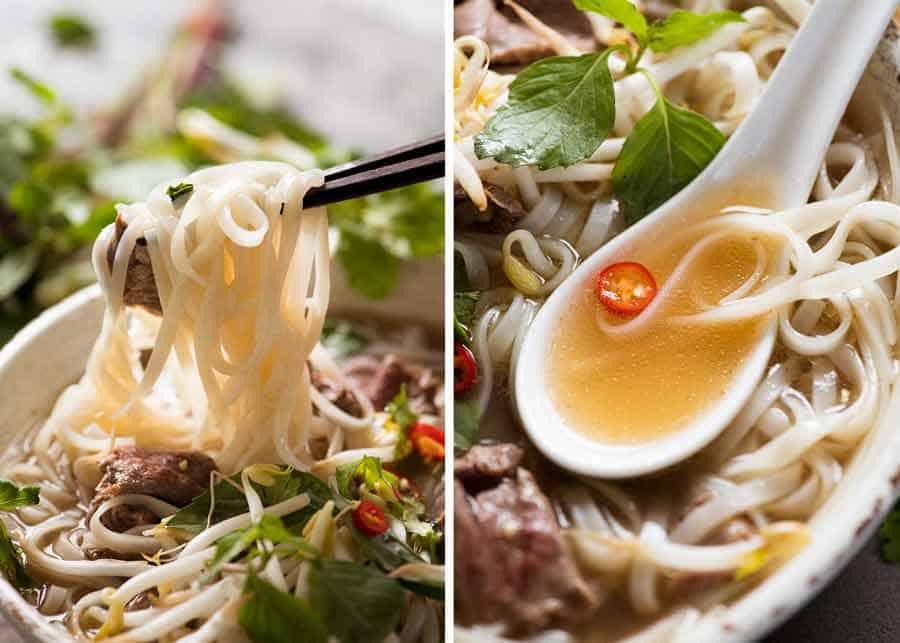
Don’t Waste the Leftover Brisket
The Pho broth requires a sizable piece of brisket to achieve its intense flavor. After hours of slow cooking, the brisket becomes tender and imparts much of its essence into the broth.
While thin slices are used for topping the Pho, you’ll often have leftover cooked brisket. Don’t worry, though, as we’ve got you covered with a fantastic recipe for Caramelized Vietnamese Shredded Beef. These golden, crispy edges are utterly delightful!
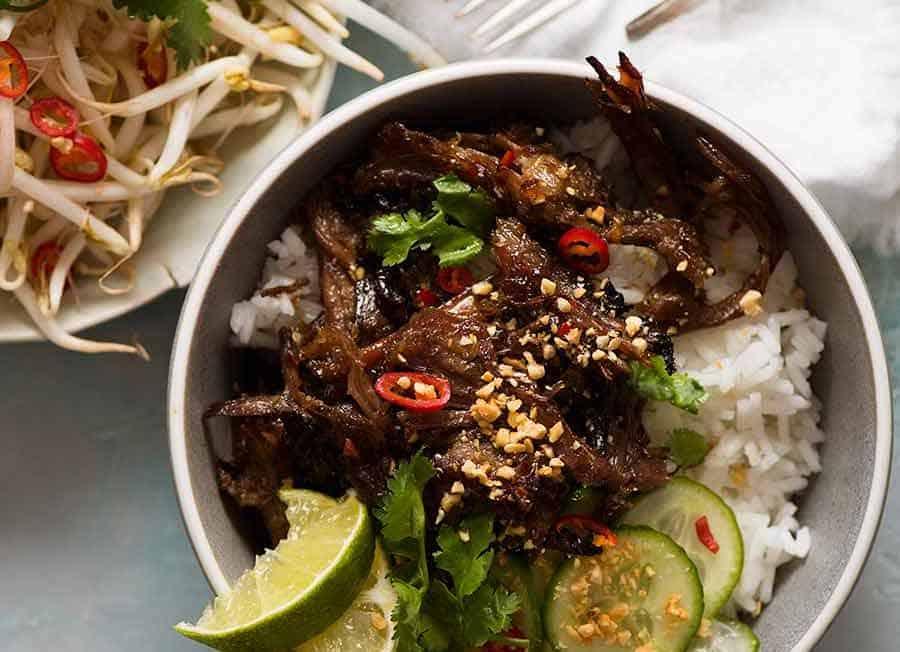

Homemade Pho: Worth the Effort
You might be wondering why you should bother making Pho at home when you can easily find it at a restaurant. Here are a few compelling reasons:
- If you’re a Pho enthusiast living far from a good Pho restaurant, this recipe is your ticket to enjoying an authentic bowl of Pho wherever you are.
- Impress your friends and family by serving a unique and memorable dish at your next gathering. This recipe can serve six as a complete meal or up to 10-12 smaller bowls as part of a larger feast. Consider adding Vietnamese Rice Paper Rolls, Lemongrass Chicken, Bun Cha (Vietnamese Pork Meatballs), or the famous Vietnamese Caramel Pork for a delightful spread.
- Save money! A single serving of Pho in the city can cost upwards of $10. By making it at home, you can indulge in more Pho for less.
- Stock up your freezer with this extraordinary broth, allowing you to enjoy the flavors of Pho at your convenience. After all, this broth keeps well for months.
- If you enjoy leisurely Sundays spent pottering around the kitchen, making Pho is the perfect project to engage your senses and create something truly special.
My personal motivation falls under category five. I am one of those dedicated foodies who would willingly drive an hour to the nearest Vietnamese neighborhood for a bowl of Pho!
Join me in creating your own homemade Pho and unraveling the wonders of this extraordinary soup.
-Nagi x



